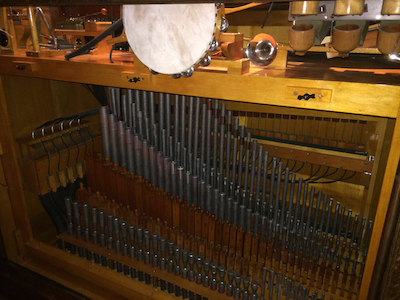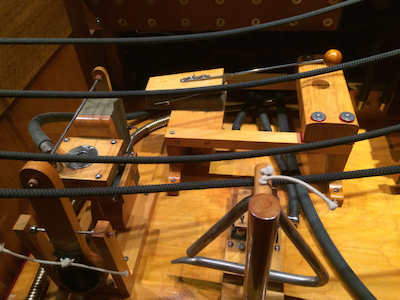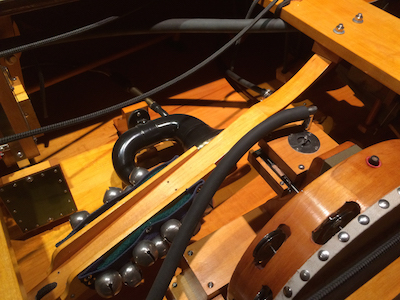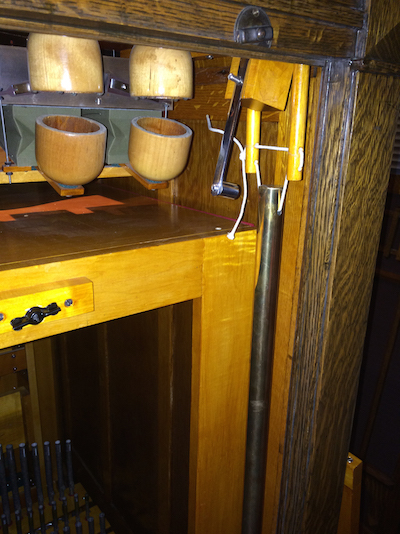|
The Photoplayer
During the silent film era, theaters employed pianists, organists, and small orchestras to provide live musical accompaniment for film. An automatic mechanical orchestra called the Photoplayer became available as an alternative to hiring live musicians. This machine potentially threatened the livelihoods of live musicians, but the two came to develop a peaceful coexistence. While the Photoplayer was used for comedic short films and the intermission, the orchestra usually accompanied the feature film. The central instruments in a Photoplayer are piano and percussion. Some machines also add pipe organs and methods for manually creating sound effects. Like a player piano, the Photoplayer plays music by reading piano rolls. Common sound effects include gunshot, bells, and drums which are generated by pulling ropes. Some feature electric sound effects such as sirens, automobile horns, and other oddities. [wiki] The American Fotoplayer is a type of Photoplayer that was developed by the American Fotoplayer Company in Berkeley, CA between the years of 1912 and 1925. The user could create multiple sounds to match the actions on screen. Between 8,000 and 12,000 were made between 1910 and 1928 with the American Fotoplayer Company's Fotoplayer being the most popular brand. The mallet percussion instruments (xylophone, glock, chimes) were manufactured by Deagan. When sound films were first created in the late 1920s, Photoplayers became unnecessary. Therefore, the American Fotoplayer Company ceased production in 1925. Of the thousands of American Fotoplayers made, less than 50 survive today and only 12 are known to still be playable. [wiki] The Linwood Dunn Theater houses one of the few remaining American Fotoplayers in perfect condition after 3 1/2 years of restoration. It is maintained and operated by Joe Rinaudo. Click photos below to enlarge. |







|
Click here to download a short video of Joe Rinaudo demonstrating some of the percussive sound effects. |
